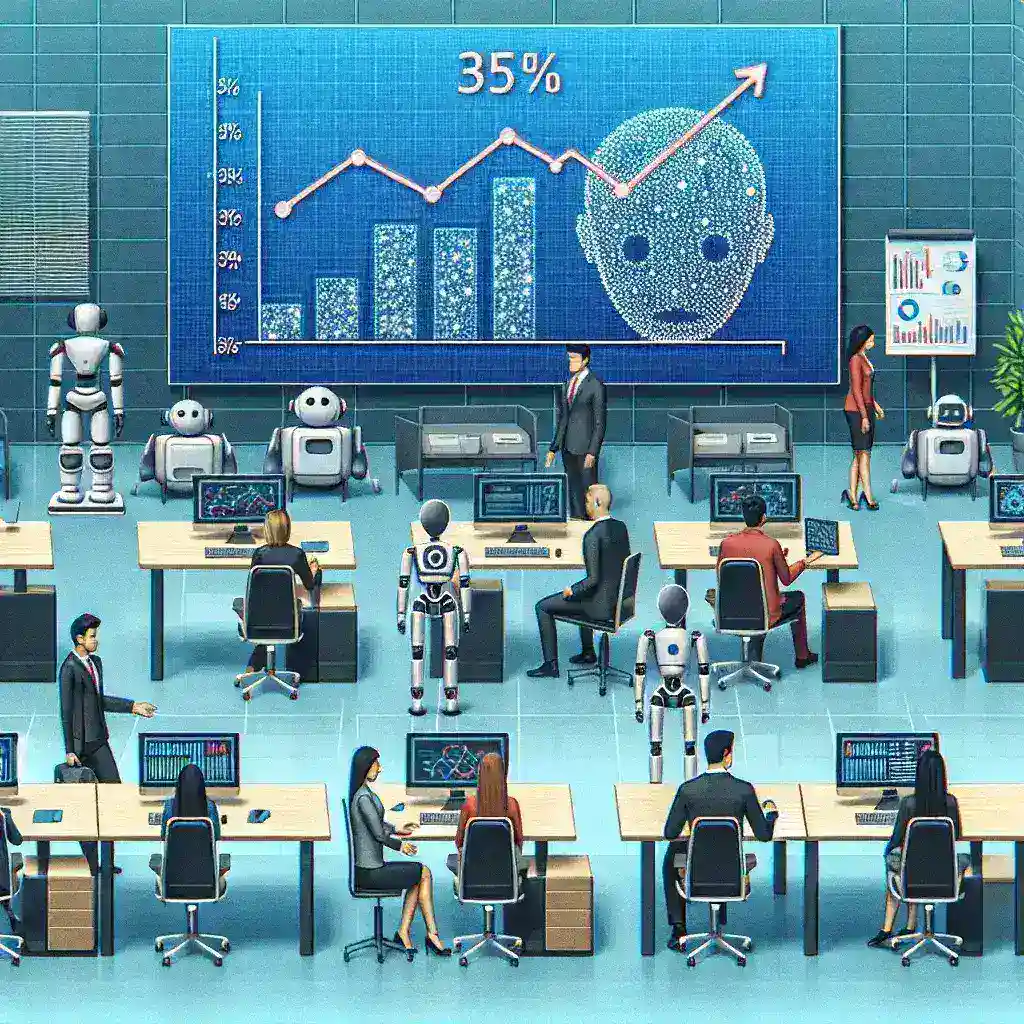The Dawn of Intelligent Photography Enhancement
In the rapidly evolving landscape of digital photography, artificial intelligence has emerged as a game-changing force that’s fundamentally altering how we approach photo and portrait editing. What once required years of expertise in complex software like Photoshop can now be accomplished with a few clicks, thanks to sophisticated AI algorithms that understand visual aesthetics, lighting principles, and human facial features with remarkable precision.
The integration of machine learning into photo editing represents more than just technological advancement—it’s a democratization of professional-quality image enhancement. From amateur photographers capturing family memories to social media influencers crafting their online presence, AI-powered editing tools are making high-quality visual content accessible to everyone.
Understanding AI-Powered Photo Enhancement Technology
At its core, AI photo editing utilizes deep learning neural networks trained on millions of images to recognize patterns, textures, and compositional elements. These systems can analyze a photograph’s characteristics—lighting conditions, color balance, subject positioning, and technical quality—then automatically apply corrections and enhancements that would traditionally require manual adjustment by skilled editors.
The technology operates through several key mechanisms:
- Computer Vision: AI systems can identify objects, faces, backgrounds, and various elements within an image
- Predictive Algorithms: Machine learning models predict optimal adjustments based on aesthetic principles
- Automated Processing: Real-time application of corrections without human intervention
- Style Transfer: Application of artistic styles or professional editing techniques through learned patterns
Portrait-Specific AI Capabilities
Portrait photography has particularly benefited from AI innovations. Modern algorithms can detect facial features with extraordinary accuracy, enabling targeted enhancements that preserve natural appearance while improving overall quality. These systems can automatically adjust skin tone, reduce blemishes, enhance eye brightness, and even modify facial expressions subtly.
Leading AI Photo Editing Platforms and Tools
The market has witnessed an explosion of AI-powered editing solutions, each offering unique capabilities and targeting different user segments. Professional photographers might gravitate toward tools offering granular control, while casual users prefer one-click solutions that deliver instant results.
Professional-Grade AI Solutions
Adobe’s AI Integration has set industry standards with features like Content-Aware Fill, which intelligently removes unwanted objects, and Neural Filters that can age subjects, change expressions, or transfer artistic styles. These tools leverage Adobe’s extensive research in machine learning and computer vision.
Luminar AI represents a paradigm shift toward fully automated editing workflows. The software can analyze scene composition and automatically apply sky replacements, lighting adjustments, and color grading that maintains photographic realism while enhancing visual impact.
Mobile AI Editing Revolution
Smartphone applications have made sophisticated editing accessible to billions of users worldwide. Apps like FaceApp, Prisma, and Portrait AI demonstrate how complex algorithms can run efficiently on mobile devices, providing instant transformations that were previously impossible outside professional studios.
The Science Behind AI Portrait Enhancement
Portrait editing involves unique challenges that AI systems must navigate carefully. Human faces contain intricate details—skin texture, eye reflections, hair patterns—that require preservation during enhancement processes. Advanced algorithms employ generative adversarial networks (GANs) to maintain authenticity while improving overall appearance.
These systems understand facial geometry, enabling them to:
- Adjust lighting to create flattering shadows and highlights
- Enhance skin texture while maintaining natural appearance
- Modify eye color, teeth whitening, and hair styling
- Apply makeup effects with realistic blending
- Adjust facial proportions subtly for improved aesthetics
Ethical Considerations in AI Portrait Editing
As AI editing capabilities become more sophisticated, important questions arise regarding authenticity and representation. The technology’s ability to create highly realistic modifications raises concerns about unrealistic beauty standards and the potential for deceptive content creation.
Industry Impact and Market Transformation
The photography industry has experienced significant disruption as AI tools reduce the barrier to entry for high-quality image production. Professional photographers are adapting by focusing on creative vision and client relationships while leveraging AI to streamline technical processes.
Wedding photographers now process hundreds of images in minutes rather than hours, allowing more time for creative work and client interaction. Portrait studios offer instant previews with AI enhancements, improving customer satisfaction and sales conversion rates.
Economic Implications
Market research indicates that the AI photo editing software market is projected to reach $1.5 billion by 2026, driven by increasing demand from social media users, content creators, and professional photographers seeking efficiency improvements.
Future Developments and Emerging Trends
The trajectory of AI photo editing points toward even more sophisticated capabilities. Emerging technologies include:
- Real-time video portrait enhancement for live streaming and video calls
- 3D facial reconstruction from single photographs
- Emotional expression modification with preserved identity
- Historical photo restoration using AI inference
- Cross-cultural beauty standard adaptation for global markets
Integration with Augmented Reality
The convergence of AI editing with augmented reality technologies promises revolutionary applications. Users will soon preview makeup, hairstyles, and clothing changes in real-time, with AI ensuring realistic rendering and proper lighting adaptation.
Practical Applications Across Industries
Beyond personal use, AI photo editing serves diverse professional applications. E-commerce platforms utilize automated background removal and product enhancement to maintain consistent visual standards across millions of listings. News organizations employ AI for rapid image processing and archival photo restoration.
Medical imaging benefits from AI enhancement techniques that improve diagnostic accuracy while maintaining clinical integrity. Real estate photography leverages AI for virtual staging and lighting optimization that showcases properties effectively.
Educational and Training Applications
Photography education is evolving to incorporate AI tools as learning aids. Students can experiment with different editing approaches instantly, understanding the impact of various adjustments without extensive manual work. This accelerated learning process helps develop aesthetic judgment while building technical skills.
Challenges and Limitations
Despite remarkable advances, AI photo editing faces several constraints. Computational requirements for high-resolution processing remain significant, limiting real-time applications on lower-powered devices. Cultural bias in training data can result in algorithms that work better for certain demographic groups.
Artistic authenticity concerns arise when AI-generated enhancements become indistinguishable from manual editing. The photography community continues debating the role of automation in creative expression and the value of traditional technical skills.
Best Practices for AI-Enhanced Photography
Successful integration of AI tools requires understanding their strengths and limitations. Professional photographers recommend using AI as a starting point rather than a final solution, applying human judgment to refine automated results.
Key recommendations include:
- Maintaining original files for comparison and reversal
- Understanding the specific AI algorithms being applied
- Balancing efficiency gains with creative control
- Staying informed about emerging tools and techniques
- Developing workflows that combine AI automation with manual refinement
The Democratization of Professional Photography
Perhaps the most significant impact of AI photo editing is its role in democratizing access to professional-quality image enhancement. Small businesses can now produce marketing materials that rival those created by expensive agencies. Individual creators can compete with established brands in terms of visual quality.
This democratization extends globally, enabling photographers in developing markets to access the same tools used by their counterparts in major metropolitan areas. The result is a more diverse and competitive creative landscape that benefits consumers and pushes the industry toward continuous innovation.
Conclusion: Embracing the AI-Powered Future
As we advance into 2024 and beyond, AI for photo and portrait editing represents not just a technological evolution but a fundamental shift in how we create, share, and perceive visual content. The technology’s continued development promises even more sophisticated capabilities while raising important questions about authenticity, creativity, and the role of human expertise in digital art.
For photographers, content creators, and anyone working with visual media, understanding and adapting to AI-powered tools has become essential for remaining competitive and efficient. The future belongs to those who can effectively combine artificial intelligence capabilities with human creativity and judgment, creating content that is both technically excellent and emotionally resonant.
The revolution in AI photo editing is just beginning, and its full impact on photography, visual communication, and digital culture will continue unfolding in ways we can only begin to imagine.



Leave a Reply